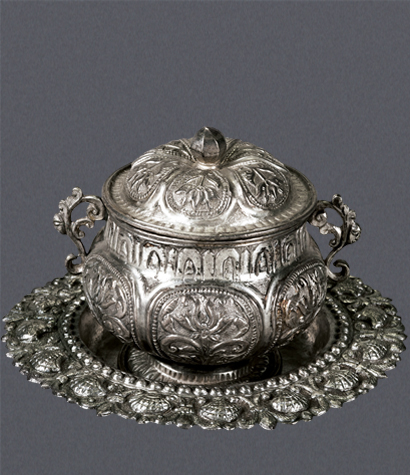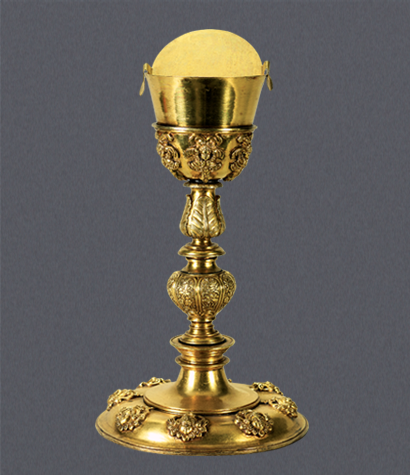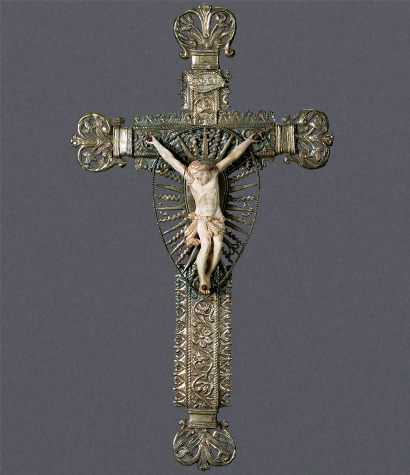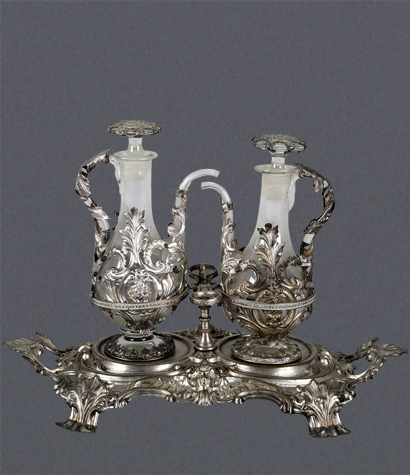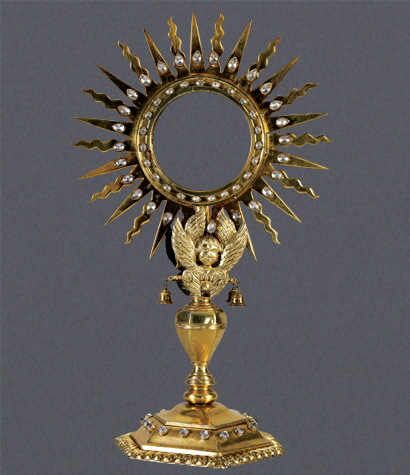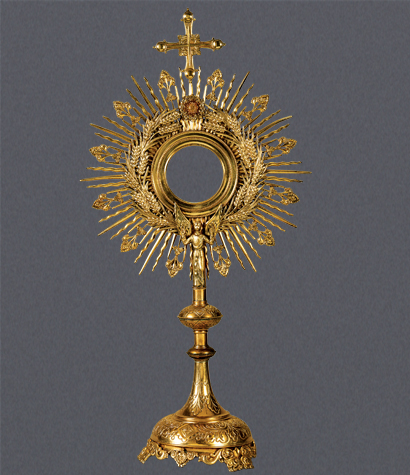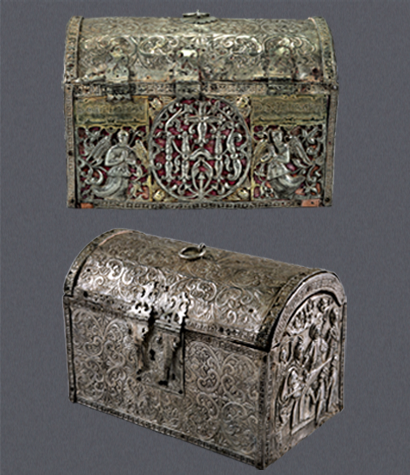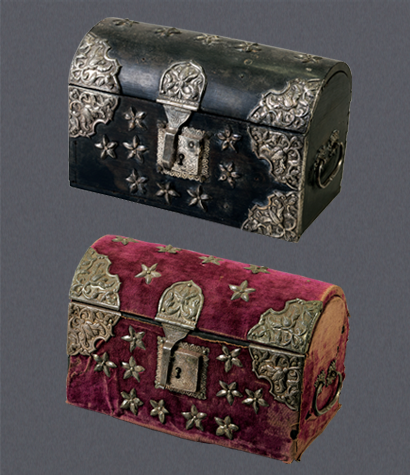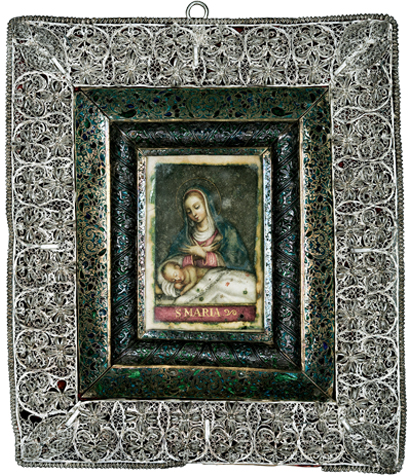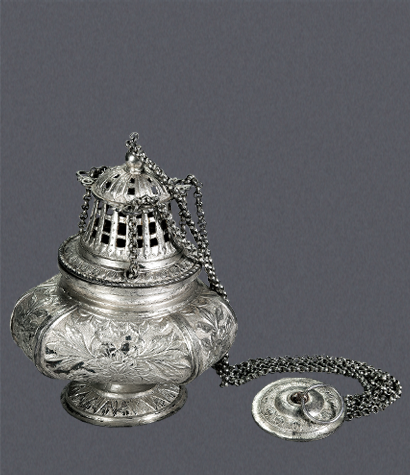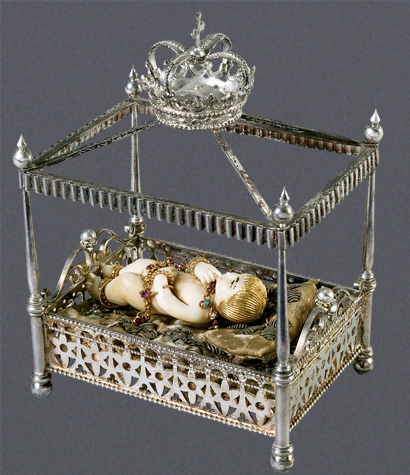
The image of the baby Jesus with only a manger for his bed has carried great emotional power over the centuries. The Infant Jesus in his crib was a votive object that usually formed part of a bride’s dowry, and represented the desire for the union to result in offspring.
A delicate example of the Indian silversmith’s art, the bed, though not particularly Indian in appearance, carries certain details that suggest its origin. They include the lavishly used Indo-Portuguese pearl motif, as also the star-shaped floral motif on the sides of the bed suggestive of the white flowers of Carissa carandas that grows wild in the hills of Goa. The bed has a canopy made up of four posts joined by a valance, and four crossbars topped by a closed crown holding up a cross, all of silver. The crown indicates the royal nature of the bed’s occupant. The sides, headboard and foot of the bed are intricately wrought. The posts go down to make up the legs of the bed and end in flattened balls.
On the bed, on an embroidered silken mattress and pillow, lies a miniature Infant Jesus made of ivory, gilt and polychrome, sucking his finger in sleep in a most natural fashion. His hair is gilded, and his gold ornaments are those of an Indian child’s: a necklace of blue and pink gemstones, a belt hung with jewels, bracelets and anklets. The god Krishna as a child, similarly adorned, and lying in his cradle, is an image popular in both Indian art and custom. Exhibiting the Christ child in his crib at Christmas was a tradition developed in Jesuit churches in Europe in the third quarter of the 16th century.
NOTES
Carissa carandas, known as the Kanta/Kantam berry locally in Goa, and sometimes called Christ’s Thorn, grows wild in the Goan hills. Here, as a flower motif, it adds a degree of poignancy to the piece, seeming to unwittingly tie the beginning with the end.
PUBLICATIONS
Museum of Christian Art, Convent of Santa Monica, Goa, India, Calouste Gulbenkian Foundation, Lisbon, 2011.

